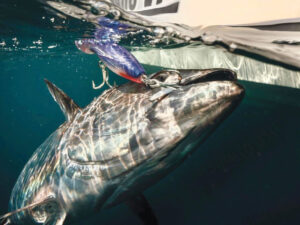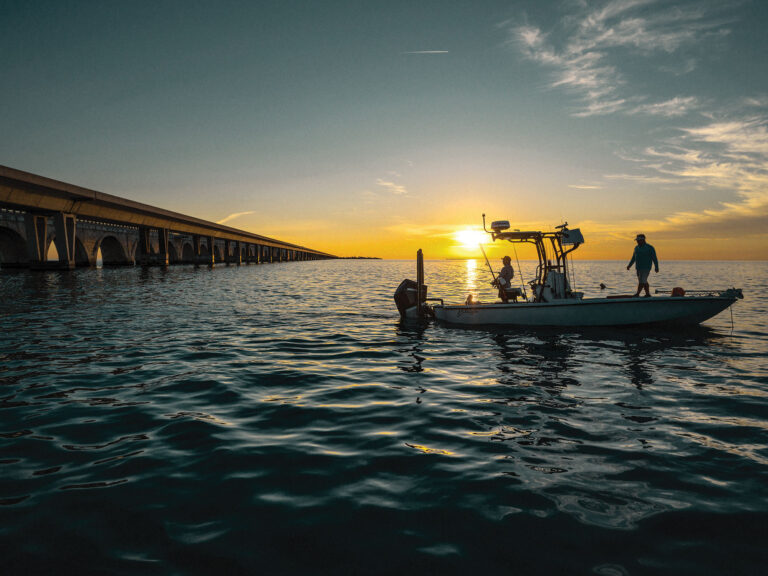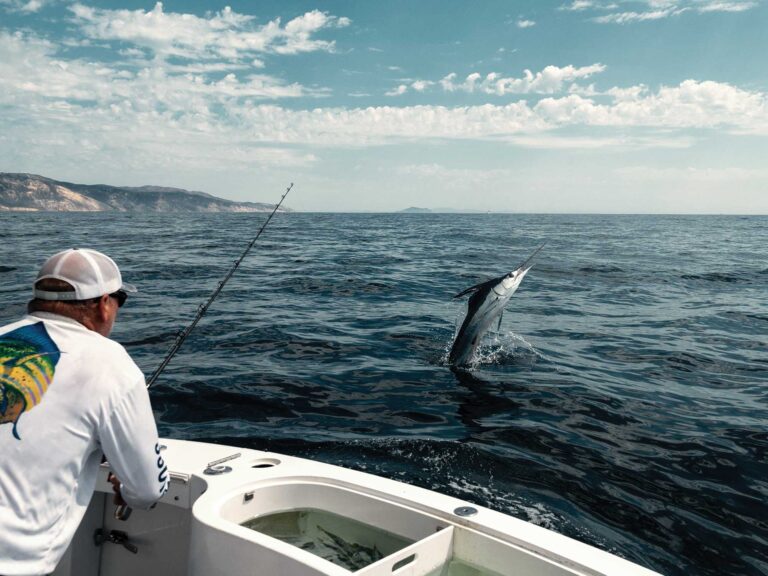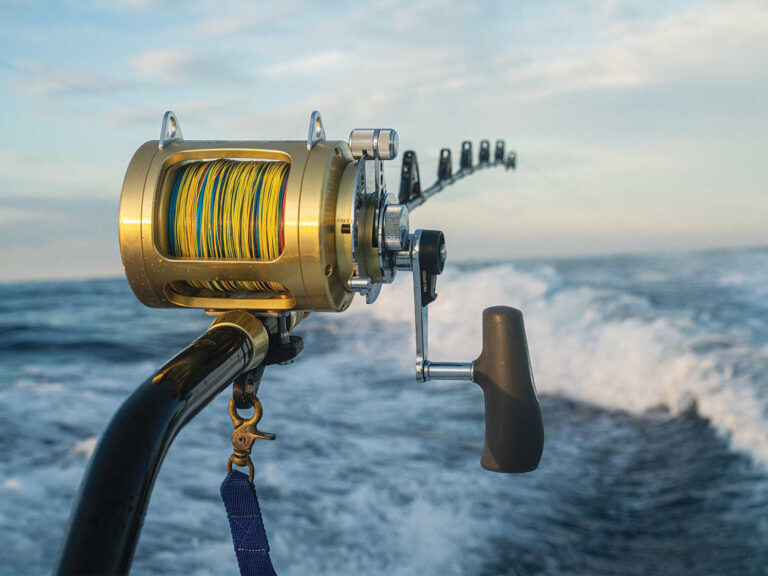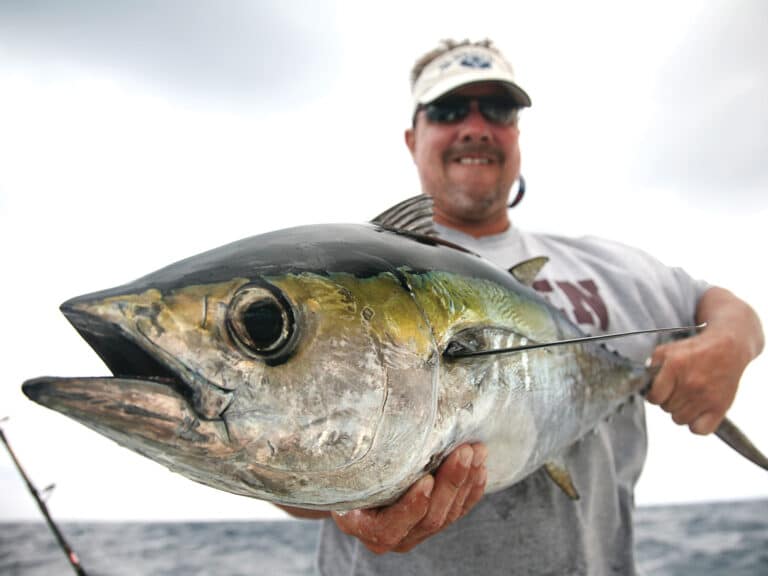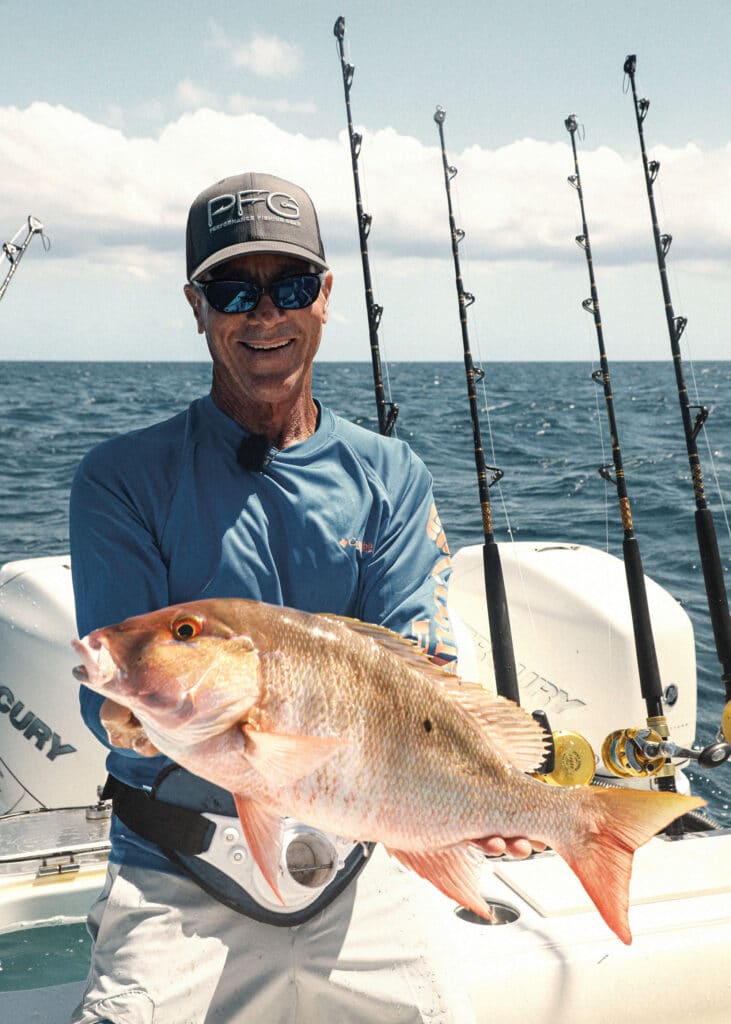
It was May, a prime time for bottomfishing throughout the Bahamas. But a stiff 20-knot easterly breeze destroyed our chance to make shallow-to-deep drifts off West End. Or did it? To compensate, we switched up our game plan, opting to rig a pair of fast-current bottom rigs. Anyone who experiences fast current when bottomfishing should consider this option. This is not a Bahamas-only rig.
The setup extends a bait’s soak time in a fast current, be it at anchor or while drifting. As basic as it may appear, there are crucial subtleties involved in its rigging and fishing, ones which make the difference between catching fish or spewing excuses back at the dock.

The Components
Our drift windows spanned from 45 feet of water to just shy of 200 feet. If we scored, we’d duplicate the same drift by following the trail feature on my electronics. We fished two bottom rods, one off the bow and one off the stern. I maneuvered the boat sideways for our drifts to prevent tangles.
The fast-current bottom rig requires a three-way swivel. One eye accepts the fishing line, the center eye accepts the leader, and the lower eye accepts the sinker line. Sinker options include bank sinkers and drop-shot weights.
If you don’t have a three-way, you can accomplish the same rig by adding a free-sliding barrel swivel on the main fishing line. (This barrel swivel is what you’ll tie your leader to.) Then thread on a spacer bead or a tiny sinker before terminating the main line with a second swivel. The bead acts as a buffer between the two swivels. We used 250-pound-test barrel swivels. Swivels are crucial because they reduce line twist and produce better bait presentations, whether with live bait, strips or chunks.
Bottom weights of up to 3 pounds work well for extreme drifts and fast currents. We got the job done on this trip with 1- and 2-pounders. The line attaching the terminal swivel to the weight was about 3 feet in length, with a Bimini twist loop at its end large enough to enable quick sinker changes. The breaking strength of the sinker line was lighter than the main fishing line. When the weight snagged bottom, the lighter line would break so we only lost the sinker.
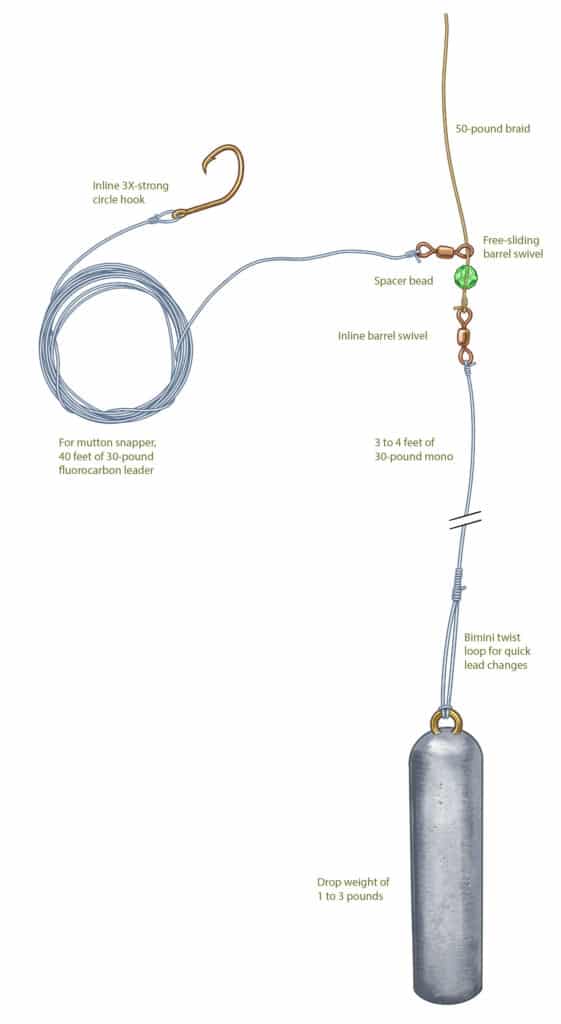
The Tackle
Given the heavy sinkers necessary to hold bottom, plus muscling up fish from the reefs—and often away from sharks—we used Penn Torque reels spooled with 50-pound braid. We paired the reels with stand-up rods rated for 80- to 130-pound lines, which easily handled the weights. The lines attaching our sinkers were 30-pound-test. This fishing style wasn’t especially sporting on this day, but it beat going back to the dock empty-handed.
Ultra-long leaders pair best with this rig; they’ll furl about in the current 30 to 50 feet beyond the weights and attract a wide variety of bottomfish. This fell right in place for us, given the mutton snapper were schooling. Typical mutton snapper leaders are extremely long. When not feeding aggressively, muttons peck at a bait, losing interest at the slightest resistance. Long leaders provide a lot of slack, so muttons don’t sense anything unnatural. An inline circle hook ensures a solid set as an angler winds tight to the fish. Our hook leaders were 40-pound fluorocarbon, capped with inline VMC Tournament circle hooks in sizes 4/0 to 6/0.
The Subtleties
As mentioned earlier, swivels are vital, especially on the leader carrying the hook and bait. Deployment is also critical. The weight’s position at the bottom of the rig allows for a quick descent. However, if the weight races down too quickly, the long leader will likely foul on the fishing line. Using your thumb on the spool (or a light drag), free-spool the rig at half-speed, briefly pausing every 20 to 30 feet; this keeps the leader lying with the current and away from the weight.
Maintain the feel of the sinker bouncing on the bottom. When that feel is lost, free-spool to reacquire bottom. I’ll often leave the reel in free-spool with minimal thumb pressure to keep the weight on bottom for as long as possible, especially if there’s activity. Eventually, the rig scopes out, reducing your feel and angling efficiency. After about 100 to 150 feet out, reel up and drop again. The straighter the line angle to the weight, the more effectively you’ll catch fish.
The bottom relief we covered wasn’t overly aggressive. Once our weights hit bottom, we’d occasionally help them over the reef by gently lifting the rod a foot or so. Higher profile structures require more finesse to avoid snags.
Use the same tactics at anchor. Keep the rig as straight up and down as possible, yet right on or very close to bottom. Once it planes out a bit, bring it in, check the bait, and redeploy it. It’s a game of constant fine-tuning.
Read Next: When Should Anglers Vent or Descend Bottom Fish?
The Hook-Sets
A full take will aggressively pull the rod tip down. Wind rapidly until the fish runs off the line, then pump and wind to keep it off-balance and coming your way, hopefully ahead of any sharks.
Converting subtle taps takes a bit more finesse. When I felt a mutton pecking at my bait, I’d free-spool to keep the bait in front of the fish. With braided line, it’s easy to tell subtle taps from actual takes. On this particular day, a few taps usually preceded a take, which pulled off line while in free-spool. I’d quickly engage the drag, wind tight, and boat a mutton snapper.
Give this bottom rig an honest chance. There are ways to control drift speed, such as with a sea anchor or using the boat’s power to stem the current. However, when it comes to simplicity, the fast-current bottom rig is hard to beat. Learn the tricks of this tactic and you’ll be the envy at the dock, even when the wind is blowing 20 knots and the current is raging. Because fishing action is much more exciting than sitting by the pool.

A Lead Alternative
As an alternative to lead weights, SIS (Stainless Innovation Services) fabricates 316-grade stainless-steel sinkers for this style of fishing, as well as for deep-dropping and daytime swordfishing. Touted as an environmentally friendly alternative to lead, these SIS Weights also aren’t prone to mushrooming—that is, flattening or disfiguring after repeated drops on hard bottom. Company President Brian Pilarski says they do custom orders and have fabricated sinkers from 5 ounces to 80 pounds. For more information, find SIS Weights on Instagram.

